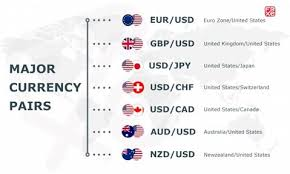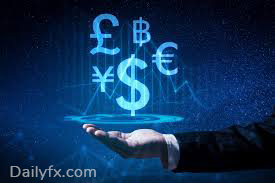Quiz
Forex trading basics
5 questions about currency trading
NICK K LIOUDIS, investopedia.com1. How Does Forex Compare to Other Markets?
Unlike stocks, futures, or options, currency trading does not take place on a regulated exchange, and it is not controlled by any central governing body. There are no clearing houses to guarantee trades, and there is no arbitration panel to adjudicate disputes. All members trade with each other based on credit agreements. Essentially, business in the largest, most liquid market in the world depends on nothing more than a metaphorical handshake.
The FX market is different from other markets in other unique ways. Traders who think that the EUR/USD might spiral downward can short the pair at will. There is no uptick rule in FX as there is in stocks. There are also no limits on the size of your position (as there are in futures). Thus, in theory, a trader could sell $100 billion worth of currency if they have sufficient capital.
The forex market is a 24-hour market producing substantial data that can be used to gauge future price movements. It is the perfect market for traders that use technical tools.

2. What Is the Forex Commission?
Investors who trade stocks, futures, or options typically use a broker who acts as an agent in the transaction. The broker takes the order to an exchange and attempts to execute it per the customer's instructions. The broker is paid a commission when the customer buys and sells the tradable instrument for providing this service.
The FX market does not have commissions. Unlike exchange-based markets, FX is a principals-only market. FX firms are dealers, not brokers. Unlike brokers, dealers assume market risk by serving as a counterparty to the investor's trade. They do not charge commission; instead, they make their money through the bid-ask spread.
3. What Is a Pip?
Pip stands for percentage in point and is the smallest increment of trade in FX. In the FX market, prices are quoted to the fourth decimal point. For example, if a bar of soap in the drugstore was priced at $1.20, in the FX market the same bar of soap would be quoted at 1.2000. The change in that fourth decimal point is called 1 pip and is typically equal to 1/100th of 1%. Among the major currencies, the only exception to that rule is the Japanese yen. One dollar is worth approximately 100 Japanese yen; so, in the USD/JPY pair, the quotation is only taken out to two decimal points (i.e., to 1/100th of yen, as opposed to 1/1000th with other major currencies).

4. What Are You Really Trading?
The short answer is nothing. The retail FX market is purely a speculative market. No physical exchange of currencies ever takes place. All trades exist simply as computer entries and are netted out depending on market price. For dollar-denominated accounts, all profits or losses are calculated in dollars and recorded as such on the trader's account.
The primary reason the FX market exists is to facilitate the exchange of one currency into another for multinational corporations that need to continually trade currencies (i.e., for payroll, payment for goods and services from foreign vendors, and mergers and acquisitions). However, these day-to-day corporate needs comprise only approximately 20% of the market volume. Eighty percent of trades in the currency market are speculative in nature conducted by large financial institutions, multi-billion-dollar hedge funds, and individuals who want to express their opinions on the economic and geopolitical events of the day.
Since currencies always trade in pairs, when a trader makes a trade, that trader is always long one currency and short the other. For example, if a trader sells one standard lot (equivalent to 100,000 units) of EUR/USD, they would have exchanged euros for dollars and would now be short euros and long dollars. To better understand this dynamic, an individual who purchases a computer from an electronics store for $1,000 is exchanging dollars for a computer. That individual is short $1,000 and long one computer. The store would be long $1,000, but now short one computer in its inventory. The same principle applies to the FX market, except that no physical exchange takes place. While all transactions are simply computer entries, the consequences are no less real.
5. What Currencies Trade in Forex?
Although some retail dealers trade exotic currencies such as the Thai baht or the Czech koruna, the majority of dealers trade the seven most liquid currency pairs in the world, which are the four "majors":
EUR/USD (euro/dollar) USD/JPY (dollar/Japanese yen) GBP/USD (British pound/dollar) USD/CHF (dollar/Swiss franc) and the three commodity pairs:
AUD/USD (Australian dollar/dollar)
USD/CAD (dollar/Canadian dollar)
NZD/USD (New Zealand dollar/dollar)
These currency pairs along with their various combinations (such as EUR/JPY, GBP/JPY, and EUR/GBP) account for more than 95% of all speculative trading in FX. Given the small number of trading instruments—only 18 pairs and crosses are actively traded—the FX market is far more concentrated than the stock market.
 Go To Source
Go To Source
DISCLAIMER
For information purposes only; not intended as financial advice